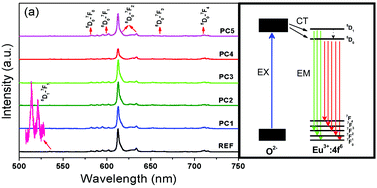Self assembly of three-dimensional Lu2O3:Eu3+ inverse opal photonic crystals, their modified emissions and dual-functional refractive index sensing
Abstract
In this study, Lu2O3:Eu3+ inverse-opal-photonic crystals (IOPCs) with controllable lattice constants were fabricated using a polymethylmethacrylate (PMMA) template. The modification effect of PC on the 5D0–7FJ and 5D1–7FJ (J = 1–6) transitions were systemically studied by


 Please wait while we load your content...
Please wait while we load your content...